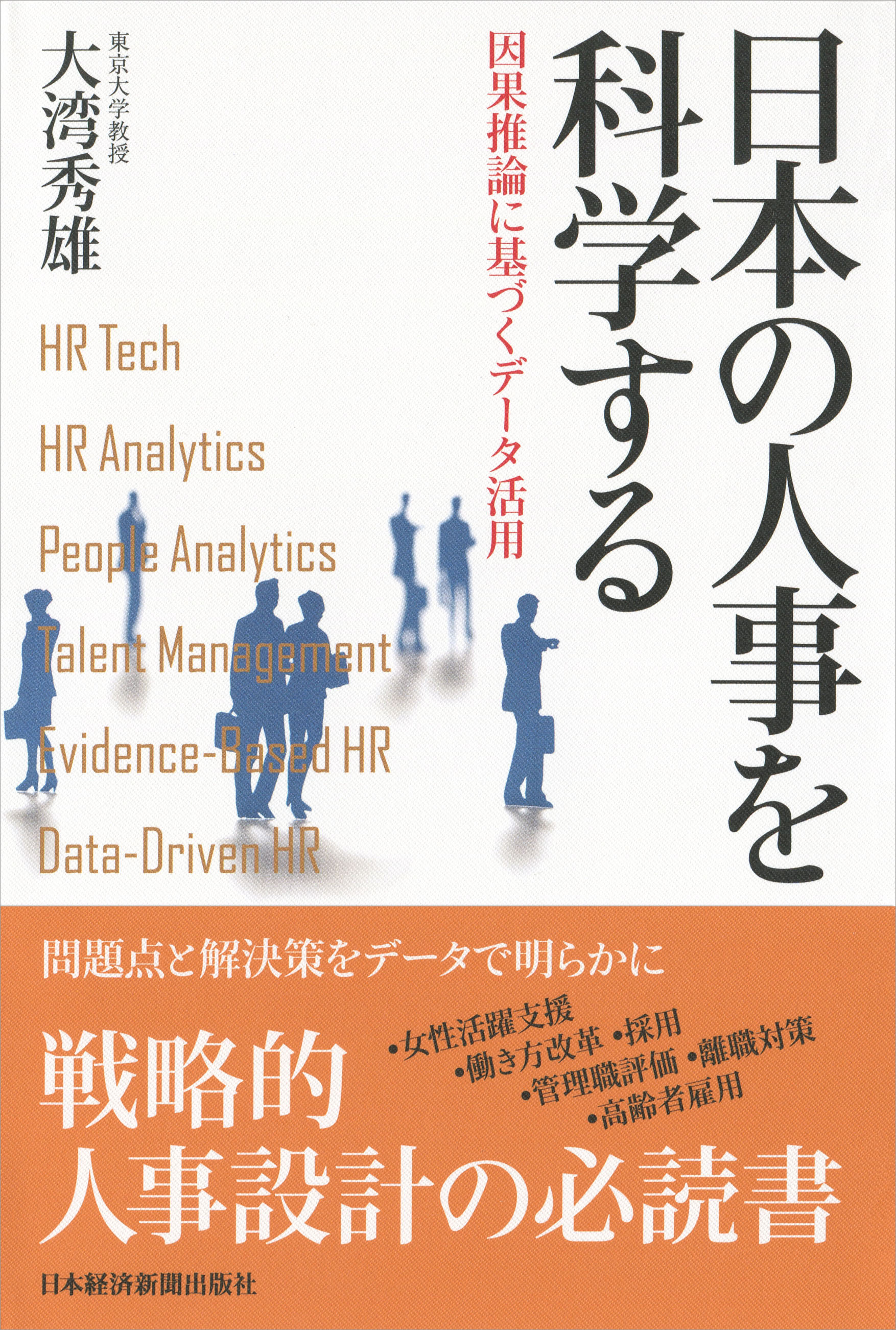
Title
Nihon no Jinji wo Kagaku Suru (Applying Science to Human Resource Management in Japan - Data Application Based on Causal Inference)
Size
256 pages, 127x188mm, softcover
Language
Japanese
Released
June 16, 2017
ISBN
978-4-532-32150-5
Published by
Nikkei Publishing Inc.
Book Info
See Book Availability at Library
Japanese Page
In the world of business, it is encouraged to follow the Plan-Do-Check-Act (PDCA) Cycle for continuous improvement. However, when it comes to human resources and organizational change, there is excessive emphasis on Planning and Doing; businesses fall short in regard to checking and acting for further improvement. Why does this happen? The author believes that one of the reasons, as detailed in this book, is that documentation describing the specific processes for these steps is lacking, and even if improvement is attempted, there are no guides or signposts by which to evaluate progress. Thus, the aim of this book is to communicate the importance of applying objective data and following the PDCA Cycle in human resource management, as well as to present a path for doing so.
The author’s fields of expertise are personnel economics and organizational economics. In order to gain access to data for empirical analysis, the author has been engaged in collaborative research projects and seminars between business, industry, and academia. These activities have led the author to believe that while there is much discussion on “work style reform” and growing interest in human resources and organizations, many companies fail to utilize a great deal of valuable internal information, and thus lose opportunities for improvement.
In this book, the author proceeds from from the basic acts of saving and ensuring unified management of data, to the methodology of causal inference. The volume covers a wide array of topics, such as the promotion of female advancement at the workplace, work style reform, recruitment, strategies to address turnover, evaluation of managerial positions, and measures to deal with the aging population. However, throughout the book, the most important topic remains the awareness of potential issues in one’s environment. This awareness leads to employees’ realizations regarding the organization’s day-to-day operations, by asking questions to themselves: is there an issue present? Is there an opportunity for improvement? In order to build a foundation to confirm the existence of these issues and to produce policies to address them (i.e., evidence), one must almost inevitably turn toward the application of data.
For example, questioning why one’s company does not promote the participation of women in its workforce could lead to the realization that there might be potential statistical discrimination lurking in the background. “Statistical discrimination” refers to the practice of companies being cautious in investing in women as a result of a logical decision-making process, based on the statistical fact that women demonstrate higher turnover rates than men. However, in reality, statistical discrimination is self-perpetuating. The decision made by companies, fueled by the fact that “women have a high probability to quit, and thus, we are reluctant to invest in them,” decreases the value of continued employment for women and urges them to quit. In this scenario, companies’ efforts to eliminate statistical discrimination lead to increased returns in continued female employment and clearly reduces turnover rate among women employees.
Managers and human resource representatives who become aware of these possibilities should also be capable of realizing the presence of inequality in the daily workplace—is there a difference in work distribution between men and women? Is there a difference in the amount of communication between men and women (in other words, is there a difference in the information being shared)? Once the realization occurs, these individuals should subsequently analyze data, clarify the issues present, and find a solution to the problems. Thus, any major problem can be solved by critical thinking, an awareness of surrounding issues, and a capacity to realize potential problems.
(Written by OWAN Hideo, Professor, Institute of Social Science / 2018)



 Find a book
Find a book


 eBook
eBook

